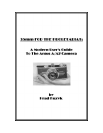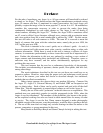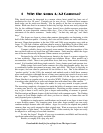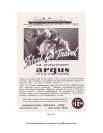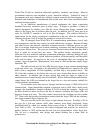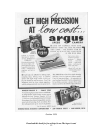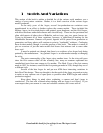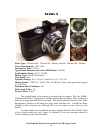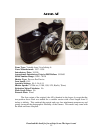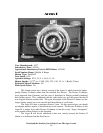Download this book for free at http://www.TheArgusA.com/
6
1 Why the Argus A/A2 Camera?
Why should anyone be interested in a camera whose latest model has been out of
production for over 50 years? Certainly not for ease of use. Point-and-shoot cameras
made today are far more user-friendly. Not for quality of the lens or accuracy of the
shutter. Both were fine for an amateur in their day and age, but are now easily surpassed.
Not for the additional features. The Argus doesn’t have double-exposure protection,
available on even disposable cameras these days. Part of the answer lies in the key
statements of the above sentences: “made today,” “in their day and age,” and “these
days.”
The Argus was born at a time when amateur photography was beginning to take
hold of the American public. Certainly, the Leica and the Contax are more well known,
but most 35mm photographers in the late 1930s and 1940s were snapping away with an
Argus. If a GI took a camera with him when he went to fight Hitler, he most likely took
an Argus. The subsequent popularity of the Argus solidified that of the 35mm format.
Compact, reliable, cheap, and rugged, more amateur 35mm photographers of the
time cut their teeth on an Argus than any other camera. Such ancestry makes the Argus
one of the most historically important 35mm cameras ever produced.
Designed to be sold in Depression-era America, the Argus is a camera stripped to
its bare essentials. There are no wide-angle nor telephoto lenses. Most models can’t
accommodate a flash. There is no quick-throw lever, and every frame must be manually
wound. It is furnished with three simple controls: focus, shutter speed, and aperture size.
While vintage Leica and Contax cameras also offer photographic purity, they are
a considerably harsher investment in money, time, and effort. The Argus is forgiving in
this respect, and can often be purchased for ten dollars or less. Due to the theories on
“product quality” in the 1930s, the materials and methods used to build these cameras
were sound enough to withstand the test of time; most require just a touch of care to work
like new again. Acquiring film is not a problem either, for the Argus uses the same
35mm film that is as popular today as it was after WWII. Finding an Argus and getting it
in working order, therefore, is easier and cheaper than with almost any other camera.
The simplicity of the Argus also makes it a very easy camera to repair yourself.
The increasing complexity of cameras has made the hobby of amateur camera restoration
a waning one, but it is very satisfying nonetheless. Restoring an older camera is the best
way to get to know it well, and to gain a deeper understanding of cameras in general.
The Restoration and Repair chapter of this book deals with common repairs. The Finding
an Argus in Good Shape chapter will show you how to identify a camera that can be
easily repaired prior to purchase.
In addition to simple repairs, modifications can be made to an Argus to turn it into
a more flexible camera. By swapping parts from other Argus models, one can easily
combine multiple features onto one camera. Argus As can also be adapted into pinhole
cameras, then very easily returned to their original state. Want an accessory shoe to hold
a range finder or light meter? No problem! With a little creativity the Argus can easily
be adapted to a wide range of uses and situations.
So why the Argus? Simple: It’s an easy-to-maintain, modifiable and historically
significant camera that uses readily available film.
Besides, at roughly $10 a pop, why not?



